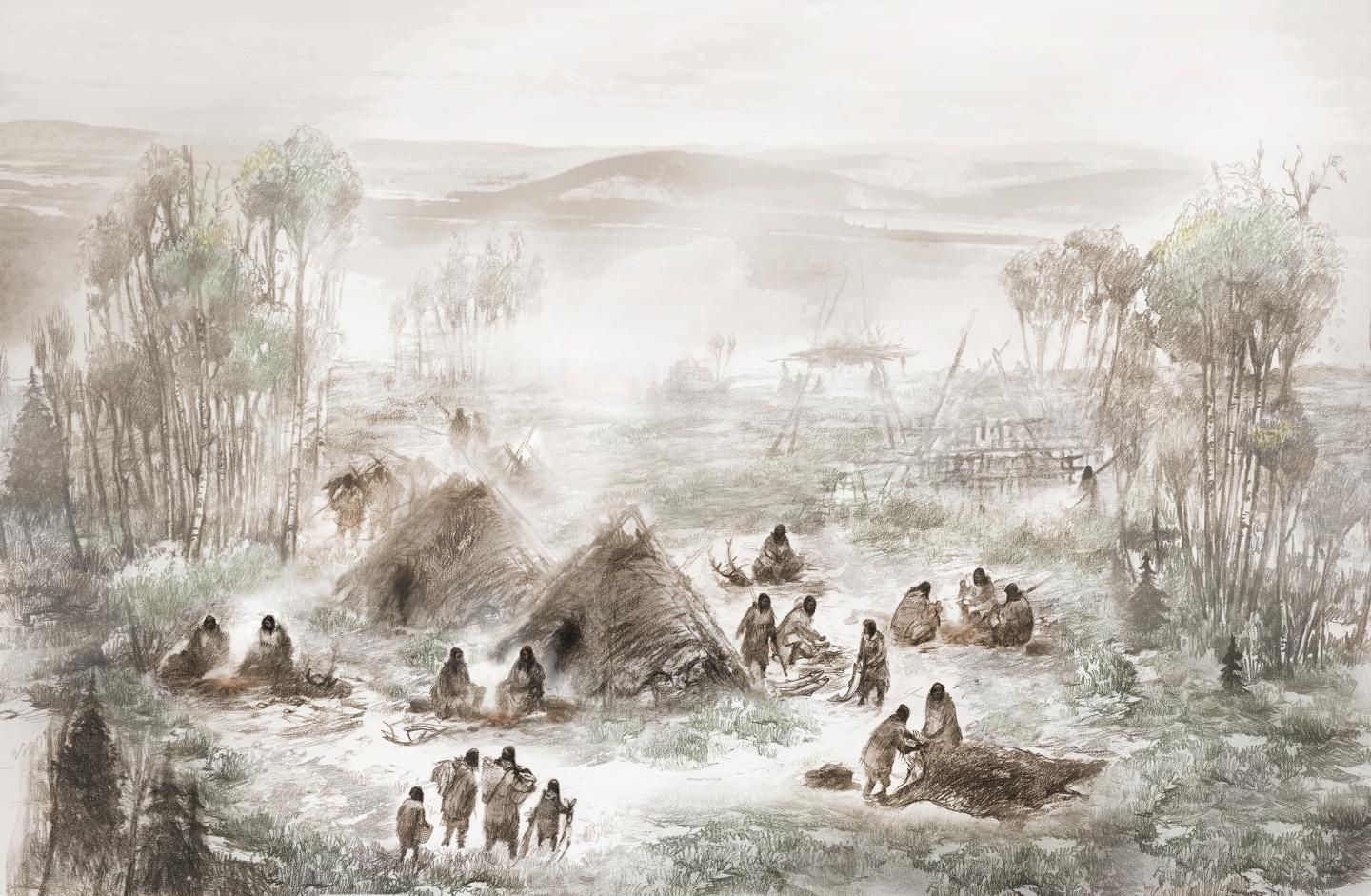
In a landmark discovery at an archaeological site in Alaska, researchers have uncovered the first direct genetic evidence of the earliest Native Americans. It not only reveals a previously unrecorded indigenous population, but indicates that humans crossed the Beringia land bridge to reach the North American continent in a single, unified migratory wave from Siberia—a major contribution to the ongoing dialogue about how the first Native Americans got here.
An international team led by scientists from the University of Cambridge and the University of Copenhagen successfully sequenced the genome of a six-week-old infant girl discovered at the Upward Sun River site in Alaska. The local Native American community named her Xach'itee'aanenh t'eede gay—Sunrise Child-girl.
The researchers discovered that she'd lived around 11,500 years ago, but that her genetic code matched neither of the two native populations known to exist during that time. The remains represent the second-oldest human genome ever discovered in North America, according to The New York Times. A paper describing the research was published in the journal Nature.
"We termed this population 'Ancient Beringians' and it seems that they represent an offshoot from the Native American population that diverged before the North and South Native Americans did," co-lead author J. Victor Moreno-Mayar, from the University of Copenhagen's Natural History Museum of Denmark, explained to Newsweek over email. "It was only by having access to this population that we were able to learn so much about the early Native American population."
Moreno-Mayar and his colleagues estimate that the "admixture event" between East Asians and a Paleolithic population called Ancient North Eurasians took place between 20,000 and 25,000 years ago. Based on the genetic evidence, they believe Ancient Beringians and the other known indigenous populations—the common ancestor of both North and South Native Americans today—started to diversify around that time.

Basically, the research suggests two possible scenarios: Two genetically distinct groups could have crossed the Beringian land bridge at some point at least 15,700 years ago, or a homogenous group crossed and later divided into Ancient Beringians and the other Native American ancestors, with the former group staying in the northern part of the continent and the latter moving south.
"It would be difficult to overstate the importance of this newly revealed people to our understanding of how ancient populations came to inhabit the Americas," co-lead author Ben Potter, a professor of anthropology at the University of Alaska Fairbanks, said in a press release. "This new information will allow us a more accurate picture of Native American prehistory. It is markedly more complex than we thought."
Uncommon Knowledge
Newsweek is committed to challenging conventional wisdom and finding connections in the search for common ground.
Newsweek is committed to challenging conventional wisdom and finding connections in the search for common ground.
About the writer
Kastalia Medrano is a Manhattan-based journalist whose writing has appeared at outlets like Pacific Standard, VICE, National Geographic, the Paris Review Daily, ... Read more
To read how Newsweek uses AI as a newsroom tool, Click here.






